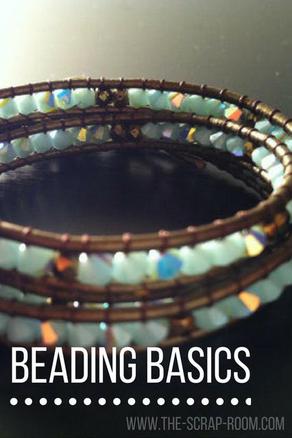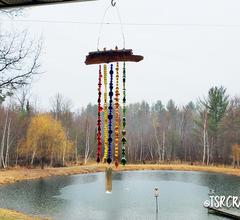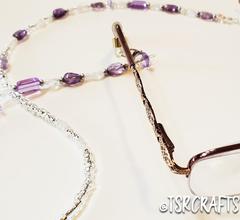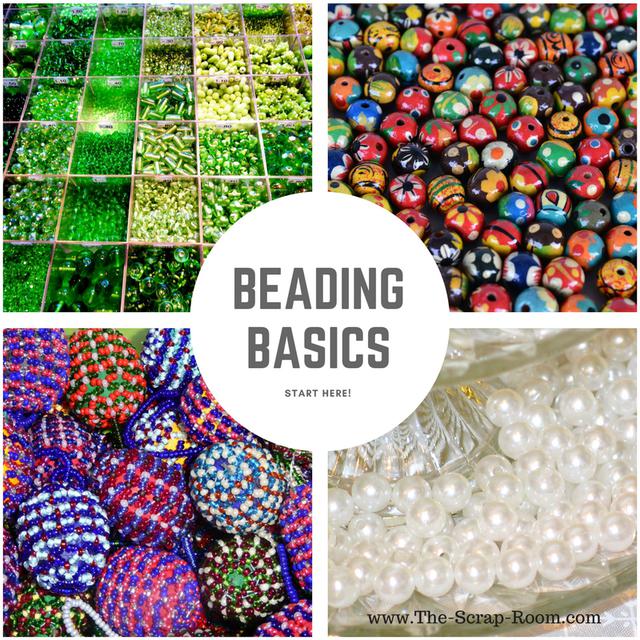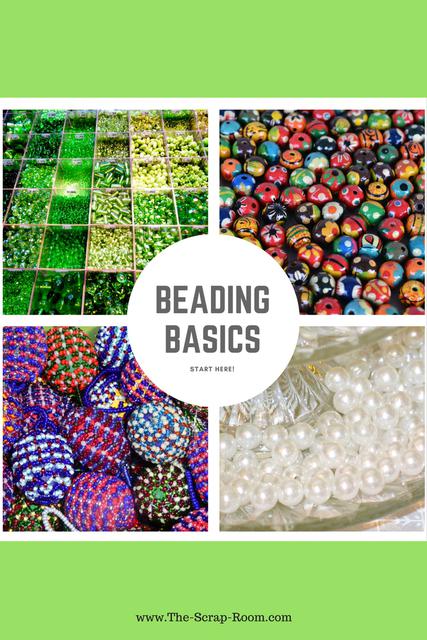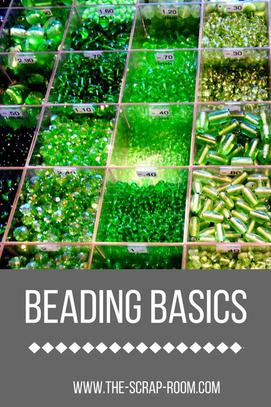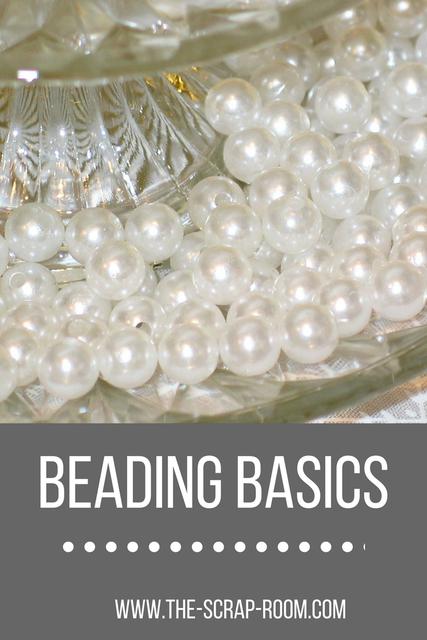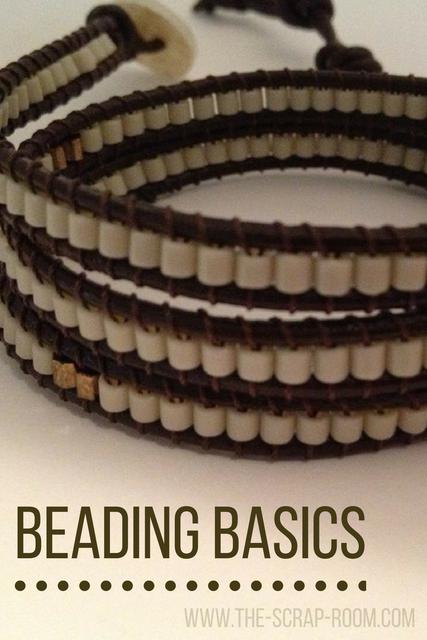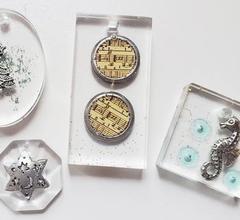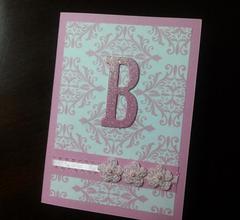You might
also enjoy...
If you enjoyed this page or found value in it, I'd appreciate it if you gave it a little love on social media!
Disclaimer: Please note that some of the links in this post may be affiliate links or ads. There is no additional cost to you, but The Scrap Room will earn a small commission should you choose to purchase through those links. Click here for my full disclaimer. Thank you for your support.
Beading Basics for Jewelry Making
Thinking about getting into beading but not sure where to start? Begin here with our basic introduction to supplies and tools!
Beads:
Beads come in such an assortment of shapes, sizes and colors that it would be nearly impossible to list them all. Here are some of the most popular bead types used for DIY jewelry:
Bugle: Bugle beads are considered seed beads and are tubular in shape. They are available in different lengths, with .5 being the shortest.
Crystal: Crystal beads are usually faceted (imagine a diamond ring) for maximum shine. The most popular crystal beads are Swarovski. These are more expensive than seed beads and are generally sold individually or in small packages, rather than in large quantities like seed beads.
Delica: Delicas are known for their perfectly cylindrical shape. Their holes are larger than traditional seed beads and their consistent size makes them ideal for weaving.
Gemstones: Gemstones are polished pieces of semi-precious stones. They are available as natural gemstones, or man-made. These are generally sold in strands.
Seed: Seed beads are commonly sold in sizes 3 to 15. Smaller numbers represent larger sizes. Much like Delica beads, seed beads sold by Miyuki are known to be the best quality and to be consistent in size, shape and color.
Needles:
When beading, it's important to use the right needle. While a sewing needle might fit through some beads, beading needles are longer and thinner, and better suited for the job. Beading needles are sized by number, and larger needles have a smaller number. Your needle size should be smaller than your bead size, and if you intend to use a weaving stitch that passes through a bead more than once, you might consider sizing down your needle even more.
Stringing Materials:
Stringing materials for beaded jewelry comes in a wide variety of colors and sizes. The two main types types are cords and wire. Cords are available in many different materials including silk, nylon and polyester. Plastic and elastic cords are also available, and these are generally used for bracelets or necklaces that stretch and do not have a clasp or toggle. Wire provides a sturdier option, but is not ideal for weaving stitches that go through a bead more than once.
Tools:
While there are dozens of tools available for specific purposes in beading, there following are a good starting set:
Crimping tools: crimpers are essential for projects using wire. You will finish your piece with beads called crimping beads; these are tightened using a crimping tool, which holds the bead in place and prevents other beads from falling off the ends. They can also be used to close decorative tubes over the top of crimping beads. These tubes will look like regular beads when they're in place, and cover unsightly crimping beads.
Pliers: Pliers are used to create loops, and bend and otherwise manipulate wire. Invest in a good pair of round nose and flat nose, and these will take you far in your craft.
Scissors: Look for a small pair of scissors with pointed ends that will allow you to cut thread without leaving frayed edges.
Wire Cutters: Wire cutters are essentially a buffed up version of scissors. Regular scissors will become dented and dull if they are used for cutting wire. Use your wire cutters only on wire, and your scissors only on soft threads and cords.
